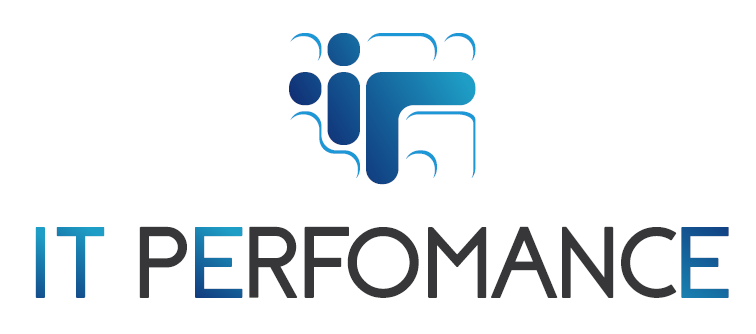Maximizing IT Performance Strategies for Optimal Efficiency

Maximizing IT Performance Strategies for Optimal Efficiency
In todays digital landscape, the efficiency effectiveness of IT systems are paramount for businesses to stay competitive. Achieving and maintaining optimal IT performance is crucial for seamless operations productivity innovation
Understanding IT Performance
Define IT performance and its significance in modern businesses. Highlight the key metrics used to measure performance such as uptime, response time scalability security.
Factors Influencing IT Performance
Discuss various factors that impact IT performance including hardware software network infrastructure human resources processes external influences like market trends regulatory compliance.
Strategies for Enhancing IT Performance
Infrastructure Optimization
Assessing hardware and software for upgrades or replacements
Embracing cloud solutions for scalability flexibility.
Implementing virtualization containerization for resource optimization.
Performance Monitoring Management:
Utilizing monitoring tools for real time performance analysis.
Implementing proactive measures to identifyresolve potential issues before they impact operations.
Establishing performance baselines for continuous improvement.
Security Measures
Strengthening cybersecurity protocols to protect against threats and breaches.
Conducting regular audits and assessments to ensure compliance with security standards.
Educating employees on security best practices to prevent human errors.
Optimizing Processes and Workflows
Streamlining IT processes to eliminate bottlenecksenhance efficiency.
Implementing agile methodologies to adapt to changing business needs swiftly.
Encouraging collaboration between IT other departments for cohesive workflows.
Talent Development
Investing in continuous training and skill development for IT professionals
Fostering a culture of innovation and learning within the IT team.
Retaining top talent through competitive compensation and growth opportunities.
Case Studies and Realn Life Examples
Present case studies or examples of organizations that successfully improved their IT performance using specific strategies. Highlight the challenges faced, the solutions implemented the outcomes achieved.
Future Trends and Innovations
Discuss emerging technologies trends that are expected to shape the future of IT performance. This could include AI driven analytics edge computing quantum computing more.
Summarize the key takeaways for optimizing IT performance emphasizing the importance of a holistic approach ongoing assessment adaptation to technological advancements. Encourage businesses to prioritize IT performance as a cornerstone for sustained success in the digital age.
This article structure covers various facets of IT performance provides actionable insights for businesses aiming to enhance their IT operations. Feel free to expand on each section with more in depth analysis expert quotes or specific examples to make the content richer more informative.
Enhancing IT performance can bring about numerous benefits to businesses across various sectors. Here are some key advantages:
Increased Efficiency and Productivity: Improved IT performance leads to faster and more reliable systems, reducing downtime and enhancing productivity. Employees can work more efficiently with optimized IT infrastructure, streamlined processes, and faster response times.
Cost Savings: Efficient IT systems often lead to cost savings. Optimizing hardware and software usage, implementing cloud solutions, and reducing downtime through proactive monitoring can lower operational costs and maximize the return on IT investments.
Enhanced Customer Experience: A high-performing IT environment translates to better services for customers. Faster response times, reliable online services, and secure transactions contribute to a positive customer experience, fostering loyalty and satisfaction.
Agility and Innovation: Agile IT systems allow businesses to adapt swiftly to changing market demands. With optimized IT performance, companies can innovate more effectively, roll out new features or services faster, and stay ahead of competitors in a dynamic market.
Improved Decision-Making: Robust IT performance monitoring provides valuable insights through data analytics. Accurate and real-time data enable informed decision-making, helping businesses strategize and plan more effectively.
Enhanced Security and Risk Mitigation: Strong IT performance often comes with heightened cybersecurity measures. A secure IT environment protects against data breaches, ensuring the integrity and confidentiality of sensitive information. This helps in compliance with regulations and minimizes the risk of reputational damage.
Scalability and Flexibility: Optimized IT infrastructure often facilitates scalability and flexibility. Cloud-based solutions and virtualization allow businesses to scale resources according to demand, supporting growth without major infrastructure overhauls.
Employee Satisfaction and Retention: A well-functioning IT environment positively impacts employee satisfaction. When systems run smoothly, employees can focus on their tasks without frustration, leading to higher morale and potentially lower turnover rates.
Competitive Advantage: Businesses with superior IT performance gain a competitive edge. They can leverage technology to innovate, respond to market changes quickly, and deliver better services, ultimately standing out in their industry.
Regulatory Compliance: Maintaining high IT performance often aligns with meeting regulatory requirements. Compliance with industry standards and regulations becomes easier with efficient IT systems and processes in place.
In essence, investing in and improving IT performance isn't just about technology; it's about empowering businesses to operate more effectively, adapt to changes, and provide better services while optimizing costs and mitigating risks.